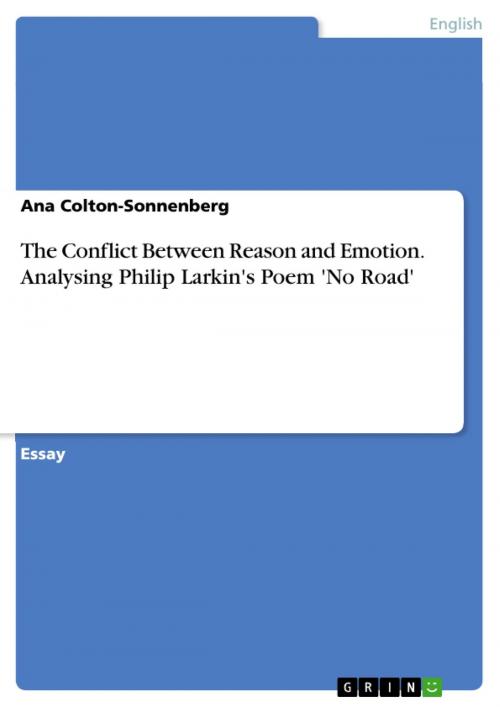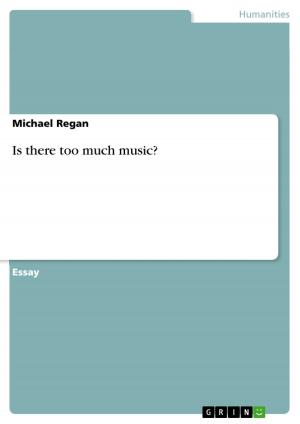The Conflict Between Reason and Emotion. Analysing Philip Larkin's Poem 'No Road'
Nonfiction, Entertainment, Drama, Anthologies| Author: | Ana Colton-Sonnenberg | ISBN: | 9783638628471 |
| Publisher: | GRIN Publishing | Publication: | April 2, 2007 |
| Imprint: | GRIN Publishing | Language: | English |
| Author: | Ana Colton-Sonnenberg |
| ISBN: | 9783638628471 |
| Publisher: | GRIN Publishing |
| Publication: | April 2, 2007 |
| Imprint: | GRIN Publishing |
| Language: | English |
Essay from the year 2006 in the subject English Language and Literature Studies - Other, grade: 1,0, University of Paderborn, course: CLC-Advanced 1, 0 entries in the bibliography, language: English, abstract: The title of Philip Larkin's 'No Road' already introduces the reader to the gloomy atmosphere prevailing in the poem. In it, the persona reflects the process of letting-go of his former partner after the mutually agreed end of their relationship. Despite the strong feelings that both partners still seem to have for each other, it is not possible for them to stay together. What the poem is essentially about is the eternal human conflict between ratio and emotion. Central to this topic is the suffering caused by this antagonism. The principle devices used to communicate the theme of suffering in the poem are the narrative framework and the language. The latter is full of imagery, simile, alliteration, enjambment, and litotes. How these devices work in the communication will be discussed in the following.
Essay from the year 2006 in the subject English Language and Literature Studies - Other, grade: 1,0, University of Paderborn, course: CLC-Advanced 1, 0 entries in the bibliography, language: English, abstract: The title of Philip Larkin's 'No Road' already introduces the reader to the gloomy atmosphere prevailing in the poem. In it, the persona reflects the process of letting-go of his former partner after the mutually agreed end of their relationship. Despite the strong feelings that both partners still seem to have for each other, it is not possible for them to stay together. What the poem is essentially about is the eternal human conflict between ratio and emotion. Central to this topic is the suffering caused by this antagonism. The principle devices used to communicate the theme of suffering in the poem are the narrative framework and the language. The latter is full of imagery, simile, alliteration, enjambment, and litotes. How these devices work in the communication will be discussed in the following.















